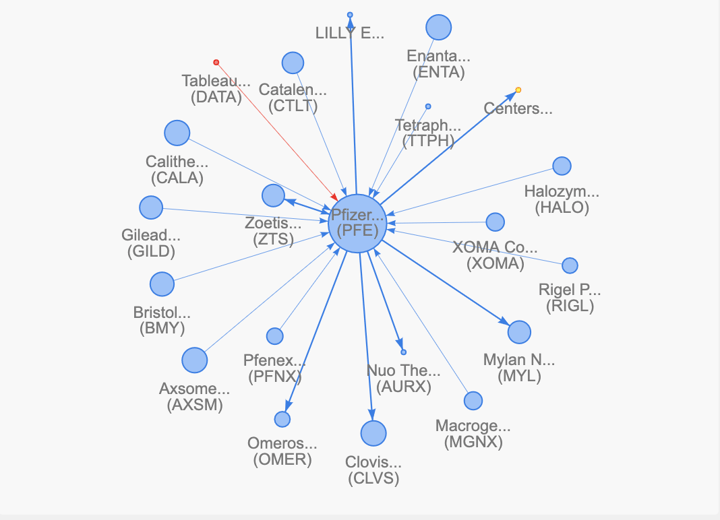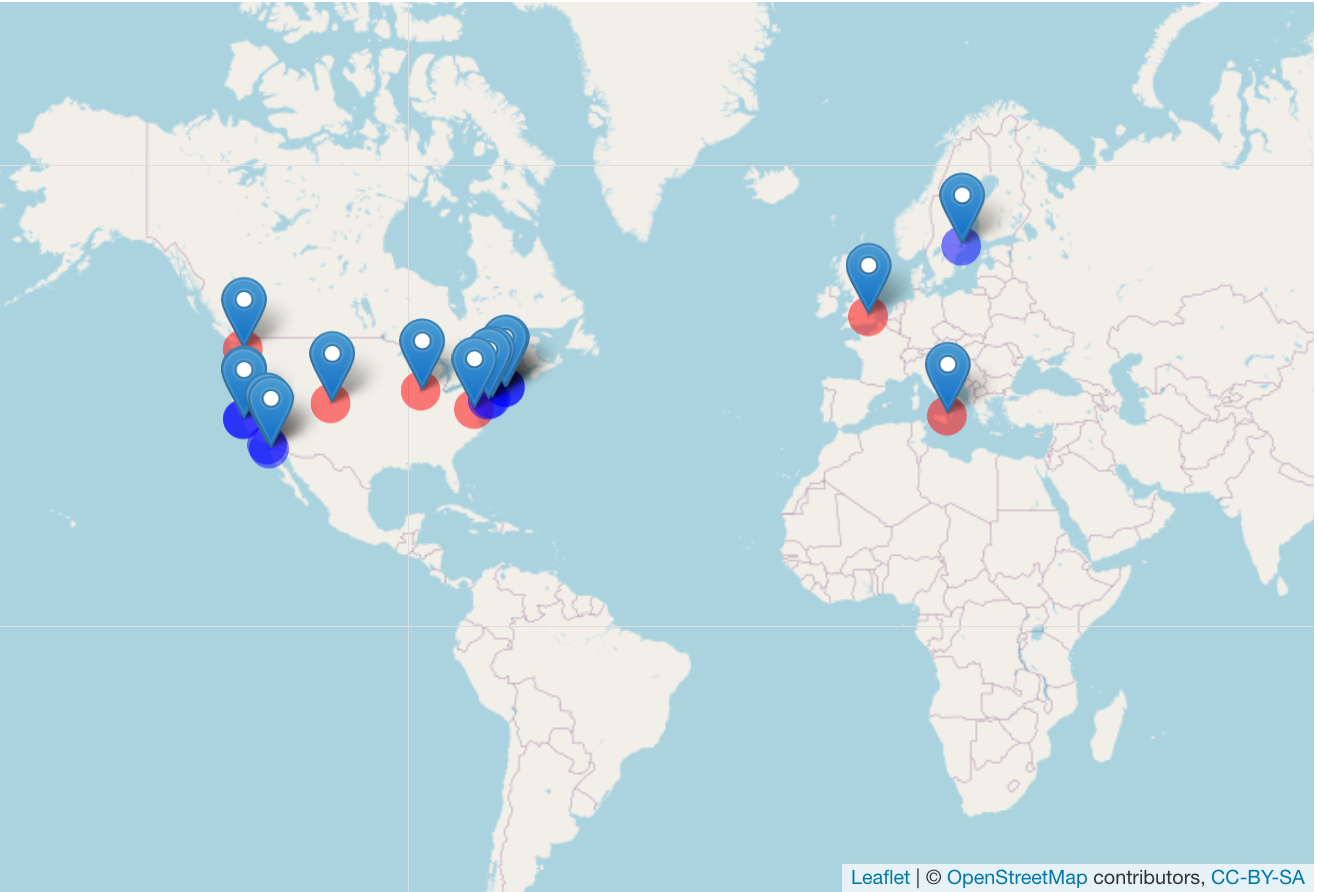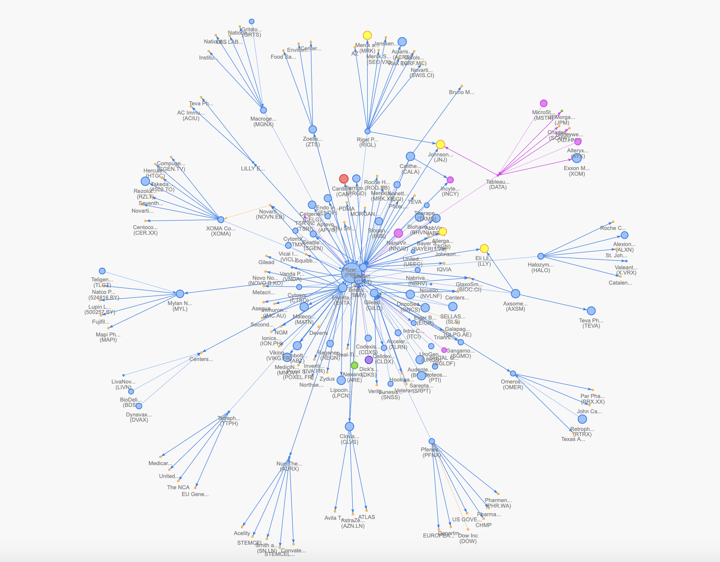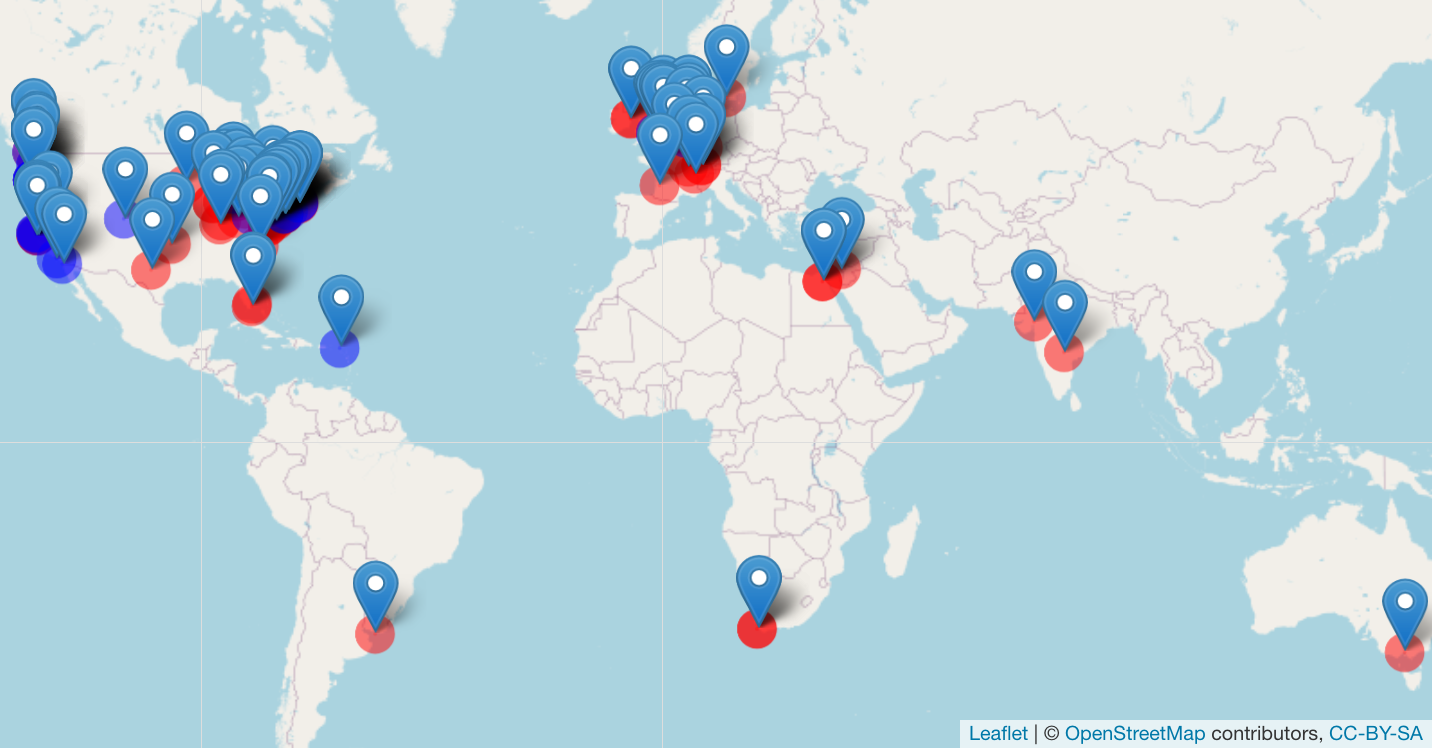Pfizer Supply Chain: Front-runners In The Vaccine Race

Summary
- Pfizer and BioNtech have announced its COVID-19 vaccine has proven to be at least 90% effective
- Over 80% of the 1.3 billion doses created have been bought out by the US, UK, Canada, Australia and EU
- We believe that by using Pfizer's existing supply chain the vaccine coverage can expand to developing countries as it is unlikely for new partnerships to form when moving this quickly
- When mapping Pfizer's supply chain to the second degree, we found the potential partners to Pfizer in developing countries are: Natco Pharma, Bayer SA, Johnson and Johnson and GlaxoSmithKline SAE
In these perilous times, the world finally awakened to some positive news that provides a glimmer of hope, the potential of a working COVID-19 vaccine. The German BioNtech and the US pharmaceutical giant Pfizer announced that it has developed a vaccine that is in phase 3 clinical trials, which has proved to be 90% effective in stopping people from contracting COVID-19. Assuming that this vaccine clears all the required safety protocols and is proven to be effective, the next big question is who will get the vaccine and when? In this post, we will analyse how Pfizers’ supply chain network can determine the distribution of the vaccine and predict how it can leverage its second-degree connections to expand its coverage.
Under the current trajectory of production, Pfizer estimates that it can develop 50 million doses by the end of 2020 and up to 1.3 billion doses in 2021. Expectedly 80% of the doses have been bought by developed countries including the US, UK, Canada, Australia and EU. Where does this leave developing countries? To its credit, the WHO established the COVAX partnership, which aims to procure enough vaccine doses such that it can immunise up to 20% of the population of participating developing countries. Whilst many promising vaccines are included in the COVAX partnership, the Pfizer/BioNtech Vaccine is not. Using the Inferess data, we can predict which companies have the capability and capacity to partner with Pfizer to expand its coverage into developing countries. We believe that the supply chain of Pfizer is important in the distribution of the vaccine, since it is unlikely that new relationships will be formed when expediting the process dramatically.
We mapped Pfizer’s supply chain network to the first and second degree using Inferess’ global supply chain data. You can find Pfizer’s network map below:

Figure 1: Pfizer’s supply chain network to the first degree
The size of the nodes represents the market capitalisation. The direction of the nodes represent the direction of economic flow (outward flow represents a customer, inward flow represents a supplier). The thickness of the edges represents the dollar value of the money flows.
We then geocoded these companies to see where they were situated, and the results of the first-degree connections can be viewed below:

Figure 2: Locations of Pfizer's first-degree connections
As you can see from the map above, the first-degree connections are mainly situated in the US, EU and the UK which are coincidentally the countries which have bought up the vast majority of doses of the vaccines.
Subsequently, we mapped out Pfizer’s second degree supply chain connections and found the following results:

Figure 3: Pfizer’s supply chain network to the second degree
The colour of the nodes represents the sector the company is in. Blue represents the manufacturing sector, purple represents retail trade, green represents services and red represents wholesale trade.

Figure 4: Locations of Pfizer's second-degree connections
As you can see from the map above, the geographic scope significantly increases with the addition of second-degree connections. Specifically, the scope has increased to include South America, Southern Africa, South Asia and the Middle East. Next, we took a closer look into the companies represented in these regions.
Potential Companies That Can Partner With Pfizer In Developing Countries
| Company Predicted to Partner with Pfizer | Region Covered |
| Natco Pharma (NSE: NATCOPHARM) | South Asia |
| Bayer SA (BVL: BAYERI1) | South America |
| Johnson and Johnson (NYSE: JNJ) | Southern Africa |
| GlaxoSmithKline SAE (EGX: BIOC | Middle East |
In South Asia, the largest company involved with Pfizer is Natco Pharma, which makes finished dosage formulations and pharmaceutical ingredients. It is among the top 3 producers of the hepatitis C drugs in India. Therefore, we predict this company can be a potential partner to Pfizer so that its vaccine coverage can also include the Indian subcontinent.
In South America, the largest company involved with Pfizer is Bayer SA. The South American branch of one of the largest pharmaceutical companies in the world is also set to benefit from Pfizer’s developments and possesses the capabilities to leverage its production sites in Mexico, El Salvador, Colombia, Brazil and Argentina. We predict the Pfizer/BioNtech vaccine can therefore expand its coverage to include parts of Latin America if it leverages this relationship.
In Southern Africa, Johnson and Johnson (J&J), which has its own COVID-19 Vaccine in late-stage trials, is the largest company involved in Pfizer’s supply chain. J&J has the capacity of producing 300 million doses of its own vaccine in cooperation with Aspen Pharmacare Holdings. By leveraging this production capacity, we predict Pfizer can distribute the Pfizer/BioNtech vaccine so that its coverage can include Southern Africa.
In the Middle East, GlaxoSmithKline SAE, a member of Glaxo Group Limited (Britain), is engaged in manufacturing, packaging and marketing sale and distribution of pharmaceutical products. It also has a strong presence in the region by having 99.66% interest in Amoun Pharmaceutical Industries Company, which is an Egypt-based pharmaceutical and medical appliances manufacturer. We predict Pfizer can leverage this partnership to ensure distribution of its vaccine so that this region also obtains coverage.
Conclusion
It is undeniably true that for the world to defeat the war against COVID-19, it must ensure that the virus is universally defeated for us to resume the normalcy of a globalized economy. When effective vaccines are created we must ensure that the distribution is somewhat equitable so that it suppresses the spread of the virus. We have identified a few companies that can profit themselves and profit their communities through their engagement in Pfizer’s supply chain. Through economic linkages and benevolent principles, we can develop and distribute an effective vaccine fairly, rationally and cogently.
Disclosure: Investors are always reminded that before making any investment, you should do your own proper due diligence on any name directly or indirectly mentioned in this article. Investors should also consider seeking advice from a broker or financial adviser before making any investment decisions. Any material in this article should be considered general information, and not relied on as a formal investment recommendation.
Want to learn more? Contact us to book a free demo and consultation



